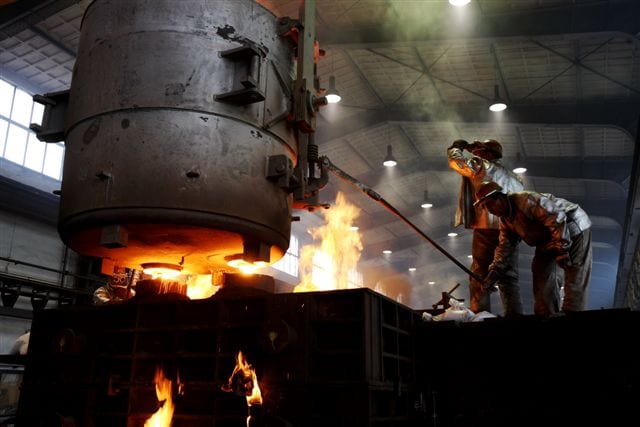Tests are currently being conducted in power plant construction to increase the efficiency of plants by designing plants for higher operating temperatures of up to 650°C using new steels. The objective is to reduce CO2 emission and at the same time to improve efficiency. New, innovative materials are required to achieve this target. And the material abbreviated as “CB2” is drawing ever more attention on an international scale for constructers of power plants.
 The high-temperature resistant material CB2 (GX13CrMoCoVNbNB9-2-1) is a variation of P91 steel (GX12CrMoVNbN9-1). In contrast to P91 which contains up to 9% chromium and 1% molybdenum, the CB2 material is also alloyed with cobalt and boron. Cobalt lends materials more resistance at high temperatures, while even low levels of boron also lend steel more resistance and at the same time improve machining properties.
The high-temperature resistant material CB2 (GX13CrMoCoVNbNB9-2-1) is a variation of P91 steel (GX12CrMoVNbN9-1). In contrast to P91 which contains up to 9% chromium and 1% molybdenum, the CB2 material is also alloyed with cobalt and boron. Cobalt lends materials more resistance at high temperatures, while even low levels of boron also lend steel more resistance and at the same time improve machining properties.
The Germany based company Sande Stahlguss has gained a lot experiences with this particular material since 2011. According to the company, it is the worldwide leader in casting of energy technology in the high-alloy material CB2 for unit weights of up to 30t.
This material has been established in the materials portfolio of Sande Stahlguss which is reflected in the fact that the company has supplied more than 600t (shipping weight) of cast CB2 steel for power plant applications since 2011. The range of sophisticated products supplied includes thick-walled valve bodies as well as inlet pipes, manifolds, high-pressure and medium-pressure inner casing for high-performance steam turbines.
By means of continuous development of production processes for the CB2 material, Sande Stahlguss is making a valuable contribution to the prevention of carbon dioxide emission and therefore also a small but necessary reduction of global warming.

















